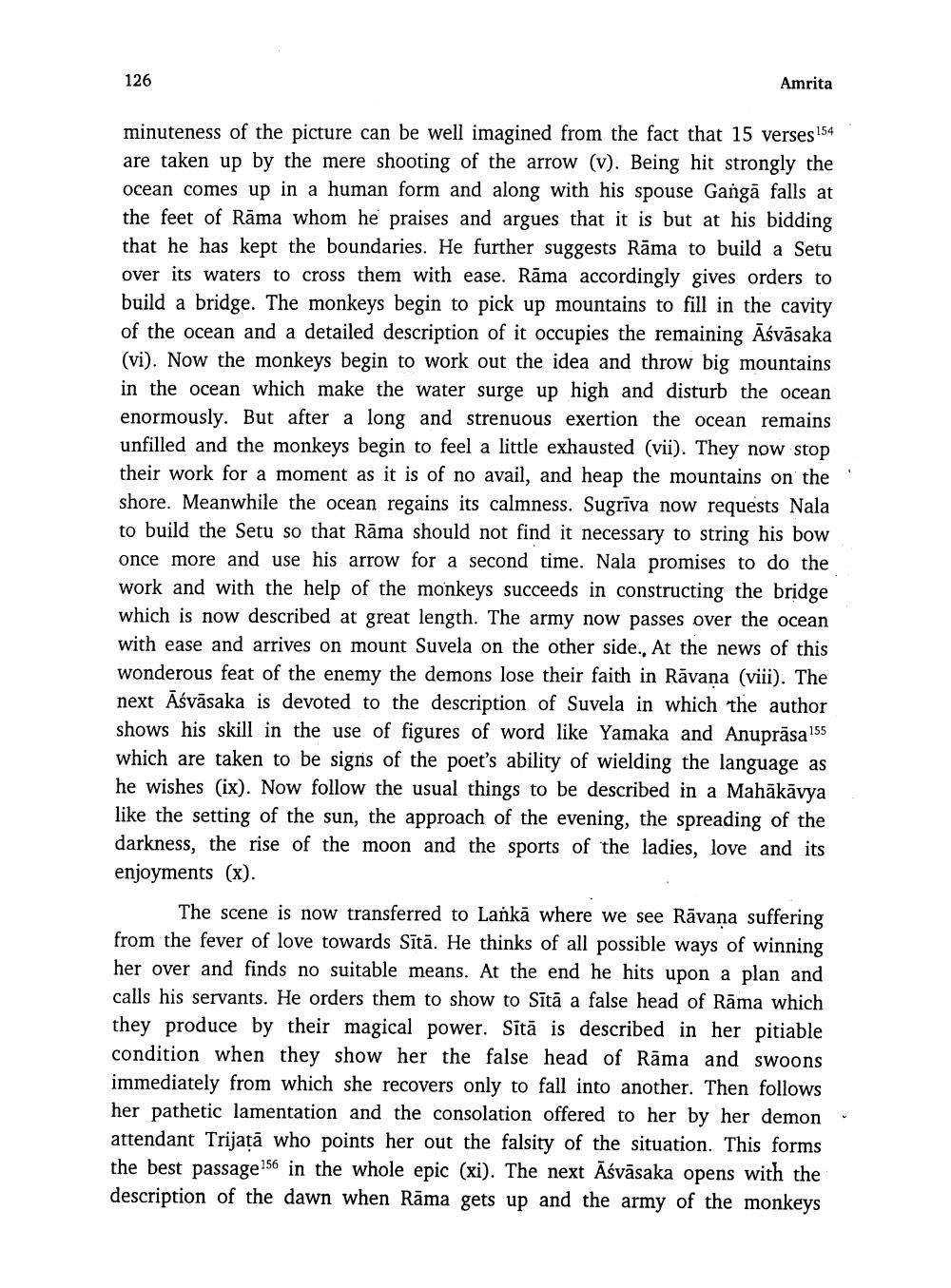________________
126
Amrita
minuteness of the picture can be well imagined from the fact that 15 verses 154 are taken up by the mere shooting of the arrow (v). Being hit strongly the ocean comes up in a human form and along with his spouse Gangā falls at the feet of Rāma whom he praises and argues that it is but at his bidding that he has kept the boundaries. He further suggests Rāma to build a Setu over its waters to cross them with ease. Rāma accordingly gives orders to build a bridge. The monkeys begin to pick up mountains to fill in the cavity of the ocean and a detailed description of it occupies the remaining Āśvāsaka (vi). Now the monkeys begin to work out the idea and throw big mountains in the ocean which make the water surge up high and disturb the ocean enormously. But after a long and strenuous exertion the ocean remains unfilled and the monkeys begin to feel a little exhausted (vii). They now stop their work for a moment as it is of no avail, and heap the mountains on the shore. Meanwhile the ocean regains its calmness. Sugrīva now requests Nala to build the Setu so that Rāma should not find it necessary to string his bow once more and use his arrow for a second time. Nala promises to do the work and with the help of the monkeys succeeds in constructing the bridge which is now described at great length. The army now passes over the ocean with ease and arrives on mount Suvela on the other side. At the news of this wonderous feat of the enemy the demons lose their faith in Rāvana (viii). The next āśvāsaka is devoted to the description of Suvela in which the author shows his skill in the use of figures of word like Yamaka and Anuprāsa 155 which are taken to be signs of the poet's ability of wielding the language as he wishes (ix). Now follow the usual things to be described in a Mahākāvya like the setting of the sun, the approach of the evening, the spreading of the darkness, the rise of the moon and the sports of the ladies, love and its enjoyments (x).
The scene is now transferred to Lankā where we see Rāvana suffering from the fever of love towards Sītā. He thinks of all possible ways of winning her over and finds no suitable means. At the end he hits upon a plan and calls his servants. He orders them to show to Sītā a false head of Rāma which they produce by their magical power. Sītā is described in her pitiable condition when they show her the false head of Rāma and swoons immediately from which she recovers only to fall into another. Then follows her pathetic lamentation and the consolation offered to her by her demon - attendant Trijatā who points her out the falsity of the situation. This forms the best passage 156 in the whole epic (xi). The next āśvāsaka opens with the description of the dawn when Räma gets up and the army of the monkeys




